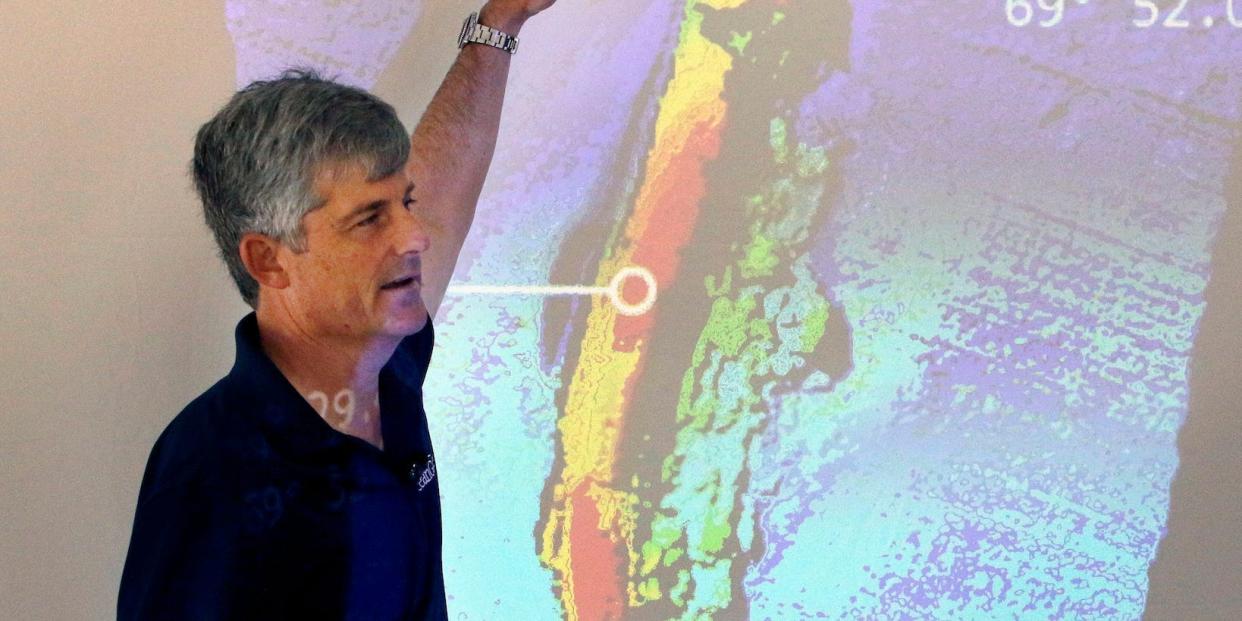These are the 9 safety concerns an ex-OceanGate worker raised with Stockton Rush about the Titan sub, including fears about its carbon-fiber hull, report says

- Oops!Something went wrong.Please try again later.
An ex-OceanGate worker reportedly raised at least nine Titan safety concerns with CEO Stockton Rush.
They included fears the carbon-fiber hull could come apart with repeated dives, per The New Yorker.
David Lochridge said he was fired from OceanGate after he raised the concerns.
A former OceanGate employee listed at least nine potential safety issues with its Titan submersible that he presented to the company's CEO just before he was fired, The New Yorker reported.
David Lochridge, who was hired by OceanGate Expeditions in 2015 to be its director of marine operations and chief pilot, conducted an inspection of the Titan submersible in January 2018 after being asked to do so by CEO Stockton Rush, the report said.
Lochridge examined the vessel and compiled a report listing what he said were safety issues with or unproven technology on the submersible, per the New Yorker. Lochridge sent the report to Rush and other OceanGate leaders, it added.
Issues he flagged, according to The New Yorker, were:
The carbon-fiber hull had "very visible signs of delamination and porosity" which meant it could come apart after repeated dives.
Glue was coming away from the seams of the Titan's ballast bags
It had mounting bolts that could rupture the ballast bags
Errant plunge holes and O-ring grooves on both of its sealing faces didn't fit with design norms
The exostructure and electrical pods were made of different materials that, when reacting with seawater, could bring about galvanic corrosion
There were "snagging hazards" from the thruster cables
The beacon that communicates the submersible's location when it surfaces was fixed with zip ties
The submersible's floor was highly flammable
The vinyl wrapping inside would emit "highly toxic gasses" if they were on fire
Lochridge said the submersible could only dive safely if there was a full scan of the hull, and said his main safety concern was the lack of testing for the hull, The New Yorker reported.
Experts believe the vessel's carbon-fiber hull may have failed first when the submersible imploded and the five people on board, including Rush, died.
Rush was "furious" with the report and called a meeting the afternoon he received it, The New Yorker reported. He said no scan of the hull was necessary as the submersible had an acoustic monitoring system that would alert the pilot and let them surface.
Lochridge was fired at the end of the meeting, the report said. This meant he was gone from the company before the Titan did any deep-sea tours.
Lochridge's lawyer said in a court filing that Rush was wrong about the warning system, as it would "only show when a component is about to fail — often milliseconds before an implosion" and would not detect any existing flaws to the hull.
It is not clear if any issues alleged by Lochridge flared up or were addressed by the company, or if any of them contributed to the submersible's fatal end.
It is also not clear if the scanning Lochridge called for took place.
OceanGate and Lochridge entered legal battles, with OceanGate accusing him of breach of contract, fraud, and revealing trade secrets, and Lochridge saying he was wrongfully terminated after raising the safety concerns.
Lochridge, after he was fired, made damning comments about the vessel. Two weeks after the firing, he said to an expert, "That sub is an accident waiting to happen."
He said, "There's no way on earth you could have paid me to dive the thing," The New Yorker reported. "I don't want to be seen as a Tattle tale but I'm so worried [Rush] kills himself and others in the quest to boost his ego."
He also said in a lawsuit that he reported in 2018 that the submersible's safety could be compromised by poor "quality control and safety" protocols that "paying passengers would not be aware" of.
He was not alone in his comments.
Previous warnings by industry experts, including those made directly to Rush himself, came to light after it emerged that the Titan had lost contact with its mothership.
The company, before the implosion, repeatedly said the Titan was safe. Rush had defended the safety of the submersible and repeatedly criticized what he saw as overly safety regulations blocking innovation.
OceanGate did not immediately respond to Insider's request for comment made outside of normal working hours.
Read the original article on Business Insider

